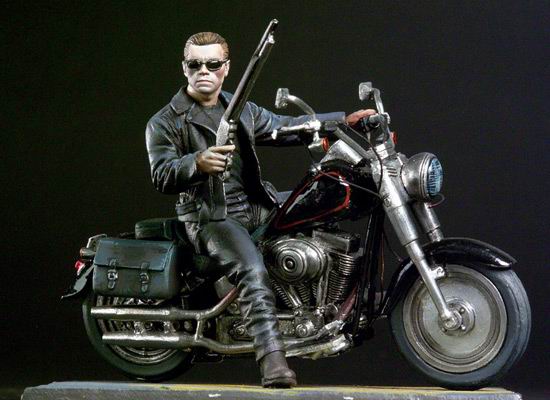"Motoring brands don’t come much bigger than Harley-Davidson. In fact, brands in general don’t come much bigger than Harley-Davidson. It’s a name that transcends industries, cultures and the seven continents. And probably Mars when we colonise it. "
Why Harley-Davidson?
the totemic Harley-Davidson brand polarises opinion. Here's a fistful of reasons to be a hawgholic
Few brands on the planet, in the entire history of commerce, have such a strong identity as Harley-Davidson.
But for all that strength of identity, the brand has an amazingly diverse and multi-layered aspect. For some, all that noise and vibration is emblematic of mechanical inefficiency. For others, it is the definitive motorcycle, the machine that all other two-wheeled forms of transport should be reckoned by. We’ve said it before. We have never truly understood the enduring appeal of the Hawg. Having been brought up ourselves on a mixture of the fizzing slickness of modern Japanese bikes and the dash and panache of European machines like Moto Guzzi, Ducati and Triumph, that the loveable Hawgness of the H-D brand has largely escaped us. But in the course of putting this thread together, we’ve glimpsed more than a handful of reasons that account for the way that Harleys are lodged in many a bikers’ hearts.
Here’s a fistful of answers to the question “Why Harley-Davidson?”
Answer No 1: Evel Knievel
The nutcase from Montana was probably responsible for more kids getting turned on to motorcycling than any individual known to man. And not only that – he plied his ridiculous trade on a Harley. And because of this, the American icon begat in the minds of a generation of kids across the world another American Icon in the machine form. The XR750-based machines EK jumped may not be synonymous these days with the heavy metal of Milwaukee, but motorcycles are all about dreams. And there can’t be any greater purveyor of the motorcycle dream (and nightmare) than our Evel.
Answer No 2: Easy Rider
The 1969 film featuring Peter Fonda, Dennis Hopper and Jack Nicholson did almost as much as Evel Knievel for the image of Harley-Davidson, but in the absolute opposite direction. If Evel was the motorcycling version of Uncle Sam – star-spangled, gung-ho and politically just to the right of Attila the Hun – Hopper, Fonda, Nicholson and the Harley choppers they rode represented the underlying freedom principle of an American Dream turned sour. What greater metaphor could there be in this sequence than stuffing hooky cash into the stars and stripes tank of an H-D chopper?
Answer No 3: The XR1200R
This was a fleeting Europe-only addition to the Harley-Davidson line, and for the life of us we can’t think why. Perhaps playing in squarely to we Eurotrash and our fixation with Evel and the XR750 range, this was a mad slice of American muscle that might not have been appropriate for the Euro twisties, but that gave the right amount of Hawg presence in a package that defied people’s expectations about the brand. The X version came with Showa shock upgrades that greatly improved ride and handling, too. This bike is a way to do Harley without seeming vaguely anachronistic.
Answer No 4: 1972 XLRTT
This bike had great success in the transatlantic racing series in the early seventies, taking on the Japanese and European teams with real panache. With Cal Rayborn twisting the throttle, it scored GP success at California’s totemic Laguna Seca raceway, and also achieved No 1 plate in the AMA series. This twin carb, drum braked monster could achieve over 165 MPH. But never mind about all that. Just look at it.
Answer No 5: Fat Boy
The perennial Fat Boy’s name came from fusing the nicknames of the two atomic bombs that flattened Hiroshima and Nagasaki respectively. Not particularly politically correct, right? And indeed, the popularity of the Fat Boy probably comes from another non-PC association. Yes, it was a Fat Boy that Schwarzenegger mounted in the Terminator films. The bike was basically a stripped down heritage soft tail with all the unnecessary chrome and other accoutrements taken away. The dark to the relative light of the XR series, the Fat Boy’s shape is what most people think of when they think of Harley.
CLICK TO ENLARGE

















